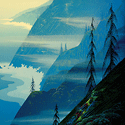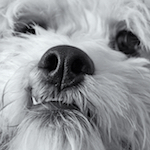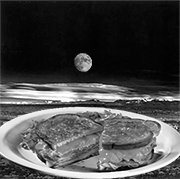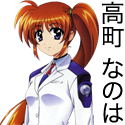|
Die Zombie Die posted:Oh drat, I knew it was too good to be true. I screwed it all up and bought the camera first instead of the lenses. I am just going to start ordering one of everything and hope that the camera succeeds where I fail. 200mm isn't nearly enough, 400mm is barely enough to snype most birds [ Mod edit: I hereby claim this snype for Spain ] Somebody fucked around with this message at 07:41 on Jun 25, 2013 |
|
|
|

|
| # ? May 9, 2024 04:32 |
|
Thinking about buying a D600 (currently have D300). Someone please convince me to do it.
|
|
|
|
What do you have for glass?
|
|
|
|
It's a really nice camera. Just make sure to buy a sensor cleaning kit or be ready to pay someone to clean your sensor a lot. It gets dusty fast.
|
|
|
|
evil_bunnY posted:What do you have for glass? 50mm f1.4. Don't think I would use much else besides this at the minute.
|
|
|
|
northward posted:50mm f1.4. Don't think I would use much else besides this at the minute.
|
|
|
|
evil_bunnY posted:My man. Do it. I second this motion. Plus you can use awesome AIS glass that you can pick up for just a few photobux.
|
|
|
|
I have a D7k that I need to have sensor cleaned. I feel like I will break my toy if I try to do it myself. Is it really that easy to clean? If not, even if you hesitate a tiny bit, then I need to have someone else do it professionally. Where is the best place to go to get the sensor cleaned? I am in the Los Angeles area if it matters. Thanks!
|
|
|
|
Every photograph I took at the ballgame tonight was a blurry piece of poo poo. D3200 body, 55-200 "kit" lens. Is it because the autofocus on the D3200 is poo poo, or that the lens in poo poo? I was shooting continuous fire. The light was fine (I had auto-ISO on and it was clocking in at around 450). Edit: I'm an idiot and the exposure time was 1/125. This is what I get for not shooting for 2 months: a bunch of blurry dogshit.
|
|
|
|
What speed were you shooting?
|
|
|
|
Yeah you're gonna want to kick that up to ISO 800 or 1600 and get good shutter speeds to make it not look like blurry trash. Also brace your camera on something if you can (not enough love for beer bottle monopods).
|
|
|
|
tijag posted:I have a D7k that I need to have sensor cleaned. It's nerve-wracking the first time. Get some sensor swabs, I think they're like :tenbux: for a 3 pack. They're soft and flexible and won't break anything if you follow the instructions. Open the shutter for cleaning in the menus, use a flashlight to look the obvious spots, and swipe a few times. Fire a test shot to see if you got it, and repeat as necessary.
|
|
|
|
I will be picking up understanding exposure this weekend, but for the mean time I have been shooting in manual mode and practicing with f stops and shutter speeds. My question is this, how do tell what ISO I should be shooting at inside versus outside? Or should I just wait for the book and learn from it?
|
|
|
|
Die Zombie Die posted:I will be picking up understanding exposure this weekend, but for the mean time I have been shooting in manual mode and practicing with f stops and shutter speeds. My question is this, how do tell what ISO I should be shooting at inside versus outside? Or should I just wait for the book and learn from it? The correct answer is whatever iso you need to get the shutter speed and aperture you want (without having more sensor noise than you're ok with).
|
|
|
|
Essentially if your shots are coming out too blurry from either camera shake or subject movement, it won't matter how clean your image is from lower ISO. I'd rather have a noisy, relatively sharp photo than a clean, slightly blurry shot. You can fix one, you can't fix the other.
|
|
|
|
Mr. Despair posted:The correct answer is whatever iso you need to get the shutter speed and aperture you want (without having more sensor noise than you're ok with). So no right or wrong, it is all dependent on variables and whatever aperture/shutter speed I use to get the correct exposure. In this scenario, taking an exposure of a single flower at noon and using the same speed and f stop, would there be quite a noticable difference between an ISO of 200 and 1000? If my questions are too noobish or I should take them to another thread, I apologize and just let me know.
|
|
|
|
Moving from iso200 to 1000 would be a little bit more than 3 times more sensitive to light. So you've got 3ish stops more of light in your exposure.
|
|
|
|
Miko posted:Essentially if your shots are coming out too blurry from either camera shake or subject movement, it won't matter how clean your image is from lower ISO. Alright so ISO affects speed at which the exposure is written on the card/film. So lower ISO will give crisper shots, but is best for stationary objects where it becomes more about detail. Any movement will create blur. Higher ISO will be best for subjects in motion where you want to capture the action without blur. Generally. Or am I just way off the mark. Regarding your post above. It would wash the subject out then.
|
|
|
|
Miko posted:Moving from iso200 to 1000 would be a little bit more than 3 times more sensitive to light. So you've got 3ish stops more of light in your exposure. For the record you shouldn't do part-steps. Most camera systems can't actually vary the sensor continuously, only in single-stop steps, so 1000 is really "ISO 1600 pulled 2/3 stop" with all the noise that entails.
|
|
|
|
Die Zombie Die posted:Alright so ISO affects speed at which the exposure is written on the card/film. So lower ISO will give crisper shots, but is best for stationary objects where it becomes more about detail. Any movement will create blur. Higher ISO will be best for subjects in motion where you want to capture the action without blur. Generally. Or am I just way off the mark. ISO is the sensitivity to light of the sensor. Don't think about ISO in terms of blur or detail, just think about your shutter speed and aperture for that, and adjust the ISO to make everything else work. Also, this is why chapter 1 of understanding exposure is all about explaining the relationship between shutter speed, aperture, and iso.
|
|
|
|
Ok. Thank you for helping. Between work and the rest of life, I have not been able to go out and do a bunch of test shots.
|
|
|
|
Paul MaudDib posted:For the record you shouldn't do part-steps. Most camera systems can't actually vary the sensor continuously, only in single-stop steps, so 1000 is really "ISO 1600 pulled 2/3 stop" with all the noise that entails. Isn't this true for every ISO that isn't the base ISO? So if you have a camera that's base ISO is 160 and you shoot at 1600, it just pushes the RAW by 3 1/3 stops?
|
|
|
|
1st AD posted:Isn't this true for every ISO that isn't the base ISO? So if you have a camera that's base ISO is 160 and you shoot at 1600, it just pushes the RAW by 3 1/3 stops? No. Analogue amplifiers are used for the full steps. If we had perfect ADCs and infinite bit depth, it wouldn’t make a difference, but we don’t so it does.
|
|
|
|
Die Zombie Die posted:Alright so ISO affects speed at which the exposure is written on the card/film. So lower ISO will give crisper shots, but is best for stationary objects where it becomes more about detail. Any movement will create blur. Higher ISO will be best for subjects in motion where you want to capture the action without blur. Generally. Or am I just way off the mark. Another resource I found helpful when learning the basics of exposure is a youtube channel called "easyexposure", basically a photographer doing video tutorials. The first couple lessons teach you a ton about exposure and are very accessible for the uninitiated.
|
|
|
|
Great, I will take a look at it tonight. Thank youVelociBacon posted:Another resource I found helpful when learning the basics of exposure is a youtube channel called "easyexposure", basically a photographer doing video tutorials. The first couple lessons teach you a ton about exposure and are very accessible for the uninitiated.
|
|
|
|
Die Zombie Die posted:Alright so ISO affects speed at which the exposure is written on the card/film. So lower ISO will give crisper shots, but is best for stationary objects where it becomes more about detail. Any movement will create blur. Higher ISO will be best for subjects in motion where you want to capture the action without blur. Generally. Or am I just way off the mark. This is super wrong. Go to your local bookstore tonight and read the chapter about exposure and the relationship of ISO/shutter/aperture in two or three photography books.
|
|
|
|
Dren posted:This is super wrong. Go to your local bookstore tonight and read the chapter about exposure and the relationship of ISO/shutter/aperture in two or three photography books. drat not just wrong, but super wrong. Well, the whole book thing I already stated I would be doing. I have no problem being wrong, that is why I asked questions in different ways to find out. But if you are just pointing out I am wrong, which has already previously been established, for the sake of just pointing out that I am wrong without explaining how, then your post really offers no kind of help. Thank you regardless though. I am sure you meant well and were genuinely trying to be helpful. Shiv Katall fucked around with this message at 20:03 on Jun 24, 2013 |
|
|
|
I was trying to suggest that you could pop by the bookstore, read the first chapter of a book, and be set. Your understanding of ISO is like what shutter speed does but not quite and it would take a bit of effort to correct it. Here is a quick reference about exposure that I wrote for a friend who borrowed my D40 for a trip and formatted into a single page. Earlier when I posted I didn't think I had it on this computer but I did. Maybe it will help you. You should do more reading than this to really understand what's going on as this glosses over the finer points. code:A point of reference is the sunny 16 rule. The sunny 16 rule is that on a sunny day a proper exposure is ƒ/16 at 1/125th with ISO 100. ISO 100 isn’t a setting on the D40 but I included it on the chart anyway so lets use the chart to find an equivalent exposure. First, move up a stop from 100 to 200. Now to maintain an equivalent exposure move down a stop on the shutter speed from 1/125th to 1/250th. You now have an equivalent exposure of ƒ/16 at 1/250th with ISO 200. Each of these settings, aperture, shutter speed, and ISO comes with tradeoffs that affect the picture that is produced. The camera will happily choose them all for you if you like but it's good to understand what they do in case you need or want to control the tradeoffs. Aperture Higher*: Increased depth of field (DOF). This means more stuff besides the thing you focus on will be in focus. You would want a big aperture number for a landscape shot. ƒ/16 is as high as you should go. Higher apertures let less light into the camera and may require slower shutter speeds or higher ISOs to get a proper exposure. Lower*: Decreased DOF. This means less stuff besides the thing you focus on will be in focus. A lower aperture lets in more light. You might choose a lower aperture so that you can increase the shutter speed and avoid motion blur. You might choose a very low aperture to create a photo where your subject is in focus and the background is out of focus. * Higher ƒ numbers are referred to as smaller aperture. Lower ƒ numbers are referred to as larger aperture. Aperture is a measure of how open the diaphram at the back of the lens is, lower ƒ numbers being more open and letting more light in to the sensor. See: http://www.google.com/search?q=lens+diaphragm&tbm=isch Shutter Higher: Faster shutter speeds let in less light and stop motion for pictures of fast moving things. To take a picture of a car going 50 or 60 mph (or from a car going 50/60mph) choose a shutter of 1/1000 or 1/2000. Lower: Slower shutter speeds let in more light but could cause motion blur. For a person who is walking shutter speed should be 1/125 to avoid blurriness. While handholding the camera it is recommended that the shutter speed be faster than the reciprocal of the focal length (1.5 times the reciprocal of the focal length on a DX camera like the D40) to avoid the effect of any shakiness from your hands. For 18mm that’s 1/30 or faster. For 55mm that’s 1/100 or faster. ISO Higher: Brighter picture, lower image quality. The D40 has its best image quality (IQ) at ISO200. The IQ is good through ISO800. ISO1600 is ok but I don’t recommend it. Always keep the ISO as low as possible. Lower: Darker picture, better image quality. The D40 has several modes you can use: P: Program Auto. Camera chooses aperture and shutter speed. A: Aperture Priority. Allows you to control the aperture. Camera chooses ISO and shutter. S: Shutter Priority. Allows you to control the shutter speed. Camera chooses ISO and aperture. M: Manual. You choose shutter speed, aperture, and ISO. Ignore all camera modes except for P, A, S and M. When operating the camera in P, A, or S mode you may control the overall exposure of a picture by holding down the +/- button behind and to the right of the shutter button and rotating the thumb wheel. This way you can make the picture brighter or darker. When operating the camera in A or S mode rotating the thumb wheel will change the aperture or shutter speed. When operating the camera in P mode rotating the thumb wheel will switch between equivalent exposure modes with different aperture and shutter speed combinations. M mode works similarly. The thumb wheel controls the shutter and the thumb wheel with the +/- button controls the aperture. The ISO setting is normally only accessible through a menu. I have bound it to the Fn button. If you hold the Fn button while rotating the thumb wheel the ISO will change. This time, however, each click is one stop. You may not want to control the ISO setting manually. The D40 has an option called Auto ISO. It can be accessed through the menu item that looks like a pencil. It is setting #10, ISO auto. The auto ISO control lets you choose a maximum ISO. 1600 is an ok choice for this setting. You may also choose a minimum shutter speed. This is useful to avoid motion blur. You should set it at 1/60 or 1/125. In auto ISO mode the camera can choose ISOs between the normally selectable ISOs, like 1250 or 640. Auto ISO is most useful with P or A mode. After you take a picture it will appear on the LCD for you to review. To see pictures you have taken press the playback button, it looks like a play symbol and is located to the upper left of the LCD. You may zoom with the zoom buttons, also located near the LCD. An important feature during review is the ability to press the Up button on the directional pad to see some information about the picture you’ve taken. Pressing up will cycle through the regular picture, some information about the exposure, highlights (areas of overexposure will blink), and a histogram. The important features are the highlights and the histogram. The highlights will tell you if there are areas that are “blown out”, that is, they are so bright that they are pure white and cannot be recovered in editing. The histogram will let you know if you have a good exposure. A good exposure will have most information in the center to right of the histogram. Too far to the left is underexposed and you should brighten things up. Too far to the right is overexposed and you should darken things a bit. Dren fucked around with this message at 23:03 on Jun 24, 2013 |
|
|
|
Dren posted:
What the gently caress?
|
|
|
|
I don't think that list means anything of equivalence between the three values, just that top to bottom = darker exposure to brighter exposure aperture = how big the hole is shutter speed = how long that hole is open iso = how sensitive the sensor is once light gets through that hole Miko fucked around with this message at 23:15 on Jun 24, 2013 |
|
|
|
Yeah they're not equivalent they are just side by side to save space.
|
|
|
|
Well, while we let DZD figure out iso, shutter and fstop, on a more Nikon related note, I broke one of the commandments of photography 'thou shalt not try any gear you do not intend to buy' and used my friend's 85mm f1.4G at a recent wedding of another friend. Those bokeys... I'm scouring keh and fm forums for a used 1.4D version because the 1.8D version I previously tried did not spit out anything nearly as pretty. Holy moly. edit: at the same wedding I met a dude with a Rebel xti mounted with a 35 1.4L
|
|
|
|
About a year ago I came to accept that I cannot afford to chase the bokeh dragon into FX nice prime territory. The 35mm 1.8G has nice bokeh if you take pictures of things that are no taller than 1 ft. Or you can get an NEX and freelens like this duder http://www.flickr.com/photos/rogvon/. And there is always the truth, if you are ready to accept it, that there are lots of neat pictures to be taken that don't include pretty bokeh.
|
|
|
|
You can look at the Sigma 85mm f1.4 also, its fantastic. It should also be cheaper than the 1.4D.
|
|
|
|
If you want beautiful bohkeys try out the old 55mm f/2.8 AI Micro, it's amazing
|
|
|
|
|
nielsm posted:If you want beautiful bohkeys try out the 105mm f/2.5, it's amazing I have made your post more correct.
|
|
|
|
nielsm posted:If you want beautiful bohkeys try out the old 58mm f/1.2 Noct-Nikkor AIS, it's amazing ftfyb (fixed that for you both).
|
|
|
|
Surely you mean the Nikkor 135mm f/2 AI-S
|
|
|
|
Do longer lenses get more bokeh than a short lens on the same aperture
|
|
|
|

|
| # ? May 9, 2024 04:32 |
|
FISHMANPET posted:Do longer lenses get more bokeh than a short lens on the same aperture Short answer: yes, sort of. Medium answer: for max bokey, longest focal length at minimum focus distance. Long answer: gently caress that I'm not looking it up or remembering it.
|
|
|



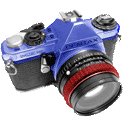



 moray cup
moray cup
